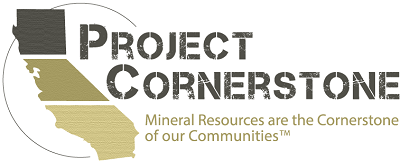Science of Concrete
Welcome to Project Cornerstone News!
We are Project Cornerstone, a nonprofit dedicated to educating students about the importance of the construction materials industry through making STEM (science, technology, engineering and mathematics) and NGSS (Next Generation Science Standards) learning relevant by utilizing hands-on activities and making the connection to viable careers.
If your child has or will participate in a Project Cornerstone activity and their school or program does not already have a media release form in place, please download, complete and return a Project Cornerstone.
The video above serves as an easy to follow guide showing you how to mix your own concrete. There is also an accompanying pdf document that you can download that includes in-depth instruction.
Have fun!
The video above serves as an easy to follow guide showing you how to conduct your own sieve analysis. There is also an accompanying pdf document that you can download that includes in-depth instruction.
Have fun!
Day 1

Teaching your children about concrete and all of the different things that are made with concrete can be a lot of fun.
Grab some magazines or look up photos online and let your kids identify where concrete can be found and make a collage of all the places they see concrete. Be ready to be amazed by their findings and creations.
Day 2

Now that your children have identified concrete in your area. Let them make their concrete. They will have a blast mixing their own concrete and creating their own mini concrete sculpture. Afterwards, ask them what they think our world would be like without concrete. Seeing your children’s minds put to the test can be so rewarding for you as parents.
Here at Project Cornerstone, we love providing fun and exciting projects for you and your kids to do as a family!
Day 3

Rocks are awesome, and they’re all around us. You may not take notice of how much in our world is made with rock! Rock comes in many different forms and can change over time. Conduct your sieve analysis and find the perfect composition for your concrete.
Take this opportunity to dive into more research with your kids about the science behind rock formations and the rock cycle.
Day 4

Now that we have explored the sand and crushed rock using a sieve analysis, we are ready to make some concrete. As shown in the picture, when cement is mixed with water, there is a chemical reaction called hydration. What kind of reaction is that?
Concrete is the most versatile building material in the world because it can go from a liquid to a solid in any form it is held in for the time it needs to cure. Let’s get creative and have your kids create some mini concrete sculptures using the molds from our Science of Concrete Kit. If you have some molds of your own that works too! Don’t forget to decorate your sculptures to make a great holiday gift for friends and family!
Day 5

There are boundless learning lessons in creating your concrete sculpture. Help your kids identify what we use from the ground in the creation of concrete. You may be able to learn something for yourself that you did not know before!
We’d like to say thank you to everyone that has been participating in our fun science and craft project. We hope you enjoyed this project with your kids as much as we love seeing all of your wonderful creations. If you haven’t shared your creations with us yet, don’t forget @projectcornerstone.
